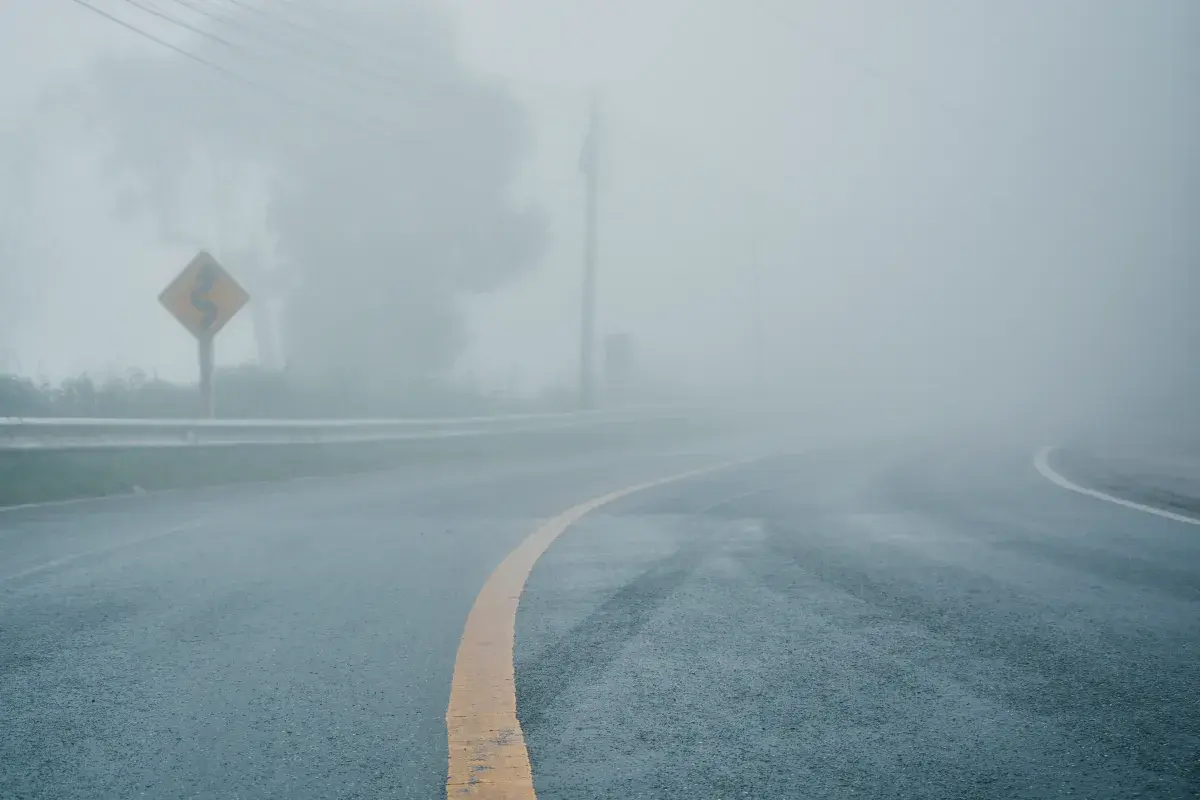
A special weather statement was issued by the National Weather Service (NWS) in Charleston, West Virginia, early Monday morning, warning drivers across portions of the Mountain State, Ohio, and Virginia to be prepared for dense fog and rapidly changing road conditions during the morning commute.
As of 11 a.m. Eastern time Monday morning, the statement has expired, but NWS meteorologist Simone Lewis, who works at the Charleston office, told Newsweek similar advisories could be issued on several days later this week.
“It’s actually a pretty common thing that occurs here in the fall,” she said. “What happens is the air temperature cools and the water temperature is still a little bit warm this time of year from the summer, and that results in saturation of the air close to the surface.”
The air saturation causes the fog.
Why It Matters
The advisory was in place due to the potential hazards posed by dense fog, particularly in river valleys where visibility dropped below half a mile. Such conditions can lead to sudden reductions in visibility, making it challenging for drivers to see other vehicles, road signs, and obstacles. With thousands of commuters traveling through the affected areas, the statement aimed to minimize risk and encouraged responsible driving practices.
What To Know
Dense fog was observed in counties spanning southeast Ohio, western and central West Virginia, and portions of southwest Virginia, according to a special weather statement issued at 5:50 a.m. ET on Monday. The advisory included cities such as Charleston, West Virginia; Marietta, Ohio; and Clintwood, Virginia, and was effective until late morning when the fog dissipated with daylight and rising temperatures.
“Dense fog [has] developed once again mainly along river valleys early this morning,” NWS Charleston, West Virginia, said in the statement. “Expect drops in visibility to under a half mile in some locations. These conditions will gradually continue to improve through late morning. Motorists should exercise extra caution and be prepared for rapidly changing visibility while driving during the morning commute.”
Drivers were advised to reduce speed, use low-beam headlights, and maintain a greater following distance to allow for extra stopping time. Drivers also were encouraged to remain alert for unexpected obstacles and avoid sudden lane changes.
The shifting conditions can obscure not only other vehicles but also pedestrians and traffic signals, increasing the potential for accidents if proper precautions are not taken.
Motorists planning to travel through the affected counties on Monday morning were urged to check for updated weather information and allow extra time for commuting. Adhering to official advisories and adjusting driving behavior can help ensure safety for all road users during adverse weather events.
Since similar statements could be issued later this week, commuters should remain up to date with the most recent weather information.
What People Are Saying
NWS meteorologist Simone Lewis told Newsweek: “[Fog] is a pretty common thing around here. You see it…a lot of mornings this time of year. It typically starts mid- to late-August and lasts into October or November.”
NWS Charleston, West Virginia, in a post on X: “Area of fog are developing this morning. Visibilities can change rapidly in locally dense fog! Be prepared to slow down and allow extra time to reach your destination this morning.”
What Happens Next?
The NWS will continue to monitor developments and issue additional updates as needed. Lewis said the NWS Charleston, West Virginia, office could issue similar statements or advisories about the dense fog overnight Monday night into Tuesday morning, Tuesday night into Wednesday morning, and Wednesday night into Thursday morning.



